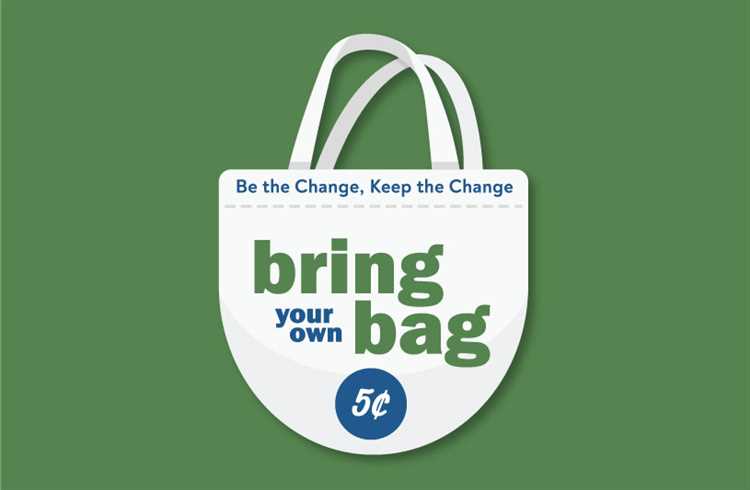In recent years, there has been a growing trend among governments and retailers to implement a 5 cent bag fee on single-use plastic bags. This seemingly small fee has generated significant debate, with proponents arguing that it is essential for combating environmental damage and opponents claiming that it is merely another burden on consumers. In this article, we will delve into the reasons behind the 5 cent bag fee, examining both its environmental and economic impact.
First and foremost, the primary reason behind the implementation of the bag fee is to reduce the consumption of single-use plastic bags. These bags, which are typically used once and then discarded, have become a major environmental problem. They clog up landfills, litter our streets and waterways, and harm wildlife. By introducing a financial incentive to encourage reusable alternatives, such as cloth or canvas bags, governments hope to change consumer behavior and promote a more sustainable way of living.
From an economic standpoint, the bag fee serves multiple purposes. One of the key economic benefits is the potential revenue it generates for governments. The money collected from the bag fee can be used to fund environmental programs, invest in infrastructure, or offset the costs of waste management. Additionally, by decreasing the demand for single-use plastic bags, the bag fee can also lead to cost savings for retailers. Not only do they spend less on the production and disposal of bags, but they also avoid reputational damage associated with being seen as environmentally irresponsible.
In conclusion, the 5 cent bag fee has been implemented with the aim of tackling the negative environmental impact of single-use plastic bags, while also offering economic benefits. By incentivizing consumers to make more sustainable choices and reducing the demand for plastic bags, governments hope to create a cleaner and healthier environment for future generations. While the bag fee may be met with some resistance, it is an important step towards building a more sustainable future.
- The 5 Cent Bag Fee: An Explanation
- Environmental Impact
- Economic Impact
- Environmental Impact of the Bag Fee
- Reducing Plastic Waste: A Positive Outcome
- Economic Impact of the Bag Fee
- 1. Reduction in Retailer Costs
- 2. Decreased Bag Usage
- 3. Increased Revenue for Local Governments
- Question-answer:
- What is the purpose of the 5 cent bag fee?
- Is the 5 cent bag fee effective in reducing single-use bag waste?
- How does the 5 cent bag fee impact businesses?
- What are the environmental benefits of the 5 cent bag fee?
- Are there any alternatives to the 5 cent bag fee in reducing plastic bag waste?
The 5 Cent Bag Fee: An Explanation
Plastic bags have been one of the biggest environmental hazards in recent years. They are non-biodegradable and often end up in landfills or as litter, causing harm to wildlife and polluting the environment. To combat this issue, many local governments have implemented a 5 cent bag fee to discourage the use of plastic bags and promote the use of reusable alternatives.
Environmental Impact
The introduction of the 5 cent bag fee has had a significant positive impact on the environment. By charging customers for each plastic bag they use, there has been a noticeable decrease in the consumption and subsequent waste of these single-use bags. As a result, fewer plastic bags are being produced, reducing the demand for the raw materials used in their production, such as petroleum. This decrease in production reduces greenhouse gas emissions and conserves natural resources.
Additionally, the fee has led to a substantial decrease in plastic bag litter. With the cost associated with each bag, individuals are more likely to think twice before accepting one and are more inclined to opt for reusable alternatives instead. This change in behavior has significantly contributed to cleaner streets, parks, and waterways.
Economic Impact
From an economic perspective, the 5 cent bag fee has proven to be beneficial. Retailers often keep the revenue from the bag fee, which can be used for various purposes such as implementing other environmental initiatives or offsetting the costs associated with providing reusable bags to customers. In some cases, the fee has even generated enough revenue to cover the costs of recycling programs or fund local environmental organizations.
Furthermore, the fee has stimulated the market for reusable bags. With the increased demand for reusable alternatives, many businesses have started offering a range of affordable and eco-friendly options. This has created new jobs and opportunities in the manufacturing and retail sectors, ultimately contributing to the local economy.
In conclusion, the 5 cent bag fee has had a significant positive impact both environmentally and economically. It has successfully reduced the consumption and waste of plastic bags, leading to cleaner streets and less harm to wildlife. Additionally, it has generated revenue for retailers and stimulated the market for reusable bags. Overall, the bag fee serves as an effective tool in promoting sustainability and encouraging responsible consumer behavior.
Environmental Impact of the Bag Fee
The implementation of a bag fee has had a significant positive impact on the environment. By charging customers for plastic bags, it has encouraged them to bring reusable bags when shopping, significantly reducing the consumption of single-use plastic bags. Here are some of the environmental benefits of the bag fee:
- Reduced plastic waste: The bag fee has led to a significant decrease in the number of plastic bags being used and disposed of. This, in turn, has reduced the amount of plastic waste that ends up in landfills, rivers, and oceans, where it poses a serious threat to wildlife and habitats.
- Conservation of natural resources: Producing plastic bags requires the extraction of non-renewable resources, such as petroleum and natural gas. By discouraging the use of plastic bags through the bag fee, it helps conserve these valuable resources and reduces the environmental impact associated with their extraction.
- Decreased pollution: Plastic bags are one of the major sources of litter in our communities. They often end up scattered across streets, parks, and waterways, creating an eyesore and contributing to pollution. By reducing the consumption of plastic bags, the bag fee has helped decrease litter and improve the aesthetic appeal of our surroundings.
- Protection of wildlife: Many animals, particularly marine life, mistake plastic bags for food and end up consuming them, which can lead to injury or even death. The bag fee has played a crucial role in reducing the availability of plastic bags, consequently minimizing the risk to wildlife and helping protect their habitats.
Overall, the introduction of the bag fee has been instrumental in promoting a more sustainable and environmentally conscious approach to shopping. It has encouraged individuals to adopt reusable alternatives and has successfully reduced the negative impact of plastic bags on the environment.
Reducing Plastic Waste: A Positive Outcome
The implementation of a 5 cent bag fee has had a significant impact on reducing plastic waste in our community. By charging customers for plastic bags, people have become more conscious of their plastic consumption and have started bringing their own reusable bags. This change in behavior has led to a significant decrease in the amount of plastic bags being used and discarded.
One of the positive outcomes of reducing plastic waste is the preservation of our environment. Plastic bags are a major source of pollution, particularly in our oceans and waterways. These bags take hundreds of years to decompose, releasing harmful toxins and posing a threat to marine life. By reducing the use of plastic bags, we are saving our precious ecosystems and protecting the wildlife that inhabit them.
Additonally, reducing plastic waste has economic benefits. By charging a fee for plastic bags, businesses have seen an increase in revenue, as people opt for reusable bags instead. This creates opportunities for local businesses to sell their own branded reusable bags, promoting their brand and increasing customer loyalty. Additionally, the reduction in plastic waste means that less money is spent on waste management and cleanup, leading to cost savings for communities.
In conclusion, the 5 cent bag fee has had a positive outcome in reducing plastic waste. It has created a shift in consumer behavior, helping to preserve our environment and reducing pollution. Additionally, it has brought economic benefits, both for businesses and communities as a whole. The bag fee is a step in the right direction towards creating a more sustainable future.
Economic Impact of the Bag Fee

The implementation of the 5 cent bag fee has had significant economic impacts, both positive and negative, on various stakeholders within the retail industry.
1. Reduction in Retailer Costs
One of the main benefits for retailers is a reduction in costs associated with providing bags to customers. By charging a fee for bags, retailers can offset the expenses they incur from purchasing and distributing bags. This can lead to increased profitability and improved financial performance for businesses.
2. Decreased Bag Usage

The bag fee has successfully reduced the consumption of single-use plastic bags, which has had positive environmental effects and also saved retailers money. With fewer bags being used, retailers are able to cut costs associated with purchasing bags in large quantities, as well as reduce waste management expenses.
However, it is important to note that some retailers may experience a decrease in customer satisfaction due to the bag fee. Customers who are not willing to pay for bags may opt to go to competitor stores that do not charge for bags, resulting in a potential loss of business for retailers.
3. Increased Revenue for Local Governments

The bag fee has also created a new revenue stream for local governments. The fees collected from the bag fee can be used to fund various environmental and waste management initiatives, leading to improved sustainability practices in communities. Additionally, these funds can be allocated towards other priority areas such as education or public infrastructure projects.
It is worth mentioning, however, that the bag fee may have a disproportionate impact on low-income individuals who may struggle to afford the extra cost. Local governments should consider implementing measures to mitigate the potential burden on vulnerable populations.
In conclusion, the bag fee has had various economic impacts on the retail industry, including cost savings for retailers, reduced bag usage, increased revenue for local governments, and potential loss of business for some retailers. It is essential for policymakers to carefully consider these economic factors when implementing bag fees in order to achieve a balance between environmental and economic goals.
Question-answer:
What is the purpose of the 5 cent bag fee?
The purpose of the 5 cent bag fee is to discourage the use of single-use bags and promote the use of reusable bags. By implementing this fee, consumers are encouraged to bring their own bags, reducing the amount of plastic bag waste that ends up in landfills or as litter in the environment.
Is the 5 cent bag fee effective in reducing single-use bag waste?
Yes, the 5 cent bag fee has been proven to be effective in reducing single-use bag waste. Many cities and countries that have implemented this fee have seen a significant decrease in the use of plastic bags, leading to less plastic pollution in the environment.
How does the 5 cent bag fee impact businesses?
The 5 cent bag fee can have both positive and negative impacts on businesses. On one hand, it can lead to decreased costs for businesses as they no longer need to provide free bags to customers. However, some businesses may experience a decrease in sales as customers may be deterred from making purchases if they have to pay for bags.
What are the environmental benefits of the 5 cent bag fee?
The 5 cent bag fee has several environmental benefits. By reducing the use of single-use bags, it helps to decrease plastic pollution in our oceans and landfills. Additionally, it encourages the use of reusable bags, which are more durable and have a longer lifespan than plastic bags.
Are there any alternatives to the 5 cent bag fee in reducing plastic bag waste?
Yes, there are several alternatives to the 5 cent bag fee in reducing plastic bag waste. Some cities have implemented complete bans on single-use plastic bags, while others have introduced incentives for using reusable bags, such as discounts or rewards programs. These alternatives can also be effective in reducing plastic bag waste.